I have three different “times” during my class this semester:
- VNPS. Group work at whiteboards. Groups of 2 or 3.
- Individual work. Students are at their desks working on their own piece of paper, but they still collaborate.
- Alone time. During alone time everyone puts on headphones or ear plugs and works alone. No questions are allowed. If they have a question they write it down on paper. `
So what’s this “alone” time all about? This semester I have been focused on a question: What is the role of working alone in a collaborative environment? If I focus that question a little more it would be: Can we use music or silence to improve student perseverance, creativity, and mathematical understanding? If I was to toss one more question in there: How can we improve the transfer from what they can do at whiteboards in groups, to what they can do alone on paper?
During “alone” time every student either puts on headphones and listens to music or they put on ear plugs. The students who listen to music are encouraged to find music that helps them concentrate. The majority of my students are using Focus At Will for their music. Focus at Will is a website that is designed to provide music that helps people concentrate for longer, and improve their creativity and perseverance during that time. Although Focus At Will is a pay site, Spotify has free “focus” channels that work good too. Focus At Will does offer advantages over Spotify but I’ll compare music options in a different post.
Here are the rules for “alone time”
- No talking, no questions. If you have a question you need to write it down. I generally break this rule if they raise their hand, but definitely no questions of peers.
- All students put on headphones or earplugs. Amongst other things, these serve as physical barriers to communication. There are no social pressures to communicate during these times.
- They do not have to finish whatever worksheet they are doing (if I’m going for procedural fluency). They should relax and focus on understanding. If they are expected to finish, they will rush. And the need to finish will cause stress if they are unable to ask questions.
- I recommend Focus At Will if they use ear buds at this time, and remind them that it’s not about finding music you like – it’s about finding music (or ambient sounds) that help you concentrate and make you relaxed and creative.
I generally run “alone” time for about 5 to 15 minutes. It depends on whether we are doing a procedural fluency type lesson, or a problem-based lesson. Here’s my basic outline:
Procedural Fluency:
I show them how to do it. They go to whiteboards and try it in groups. Then they have “alone” time, and lastly individual time.
Problem-Based:
Sometimes I start with “alone” time so they can develop their own thoughts. Then they go to whiteboards, and end with alone time during the reflection. Other times I do the opposite – begin and whiteboards and then have them go to alone time.
The Data:
After the first 3 weeks of implementing “alone” time – at about a frequency of once a class – I gave a quick survey. The survey was a rating of 1 through 5 where I asked them to rank how helpful the “alone” time has been for them. Here’s the scale:
1 – Negative effect. You would be better off without “alone” time.
2 – Not helpful. This is the “meh” answer. You can take it or leave it. It doesn’t help or hurt.
3 – A little helpful.
4 – Helpful
5 – Very helpful.
Here are the results:
I have 3 preps this year and here are the breakdowns for each subject:
The above data was referencing “alone” time, rather than the idea of listening to music specifically. I also asked the students if they had used Focus At Will outside of class. Here were those results:
Over half of my students are using Focus At Will outside of the classroom now.
I’ll categorize some of their reasonings in a different post. Students have found listening to music helpful, but also the other elements of “alone” time. Multiple students commented in the survey that they loved the fact that they did not have to finish the worksheets during alone time. They enjoyed be able to go at the pace of their learning.
Cheers!
-B
Update:
I didn’t mention that although Focus At Will is a pay site, I was able to give all my students a free one year subscription.
I forgot another important rule to “alone” time: When I do need to cut in and talk to the class they are not required to take their headphones or ear plugs off. Since the music is suppose to help them concentrate, then presumably it helps them listen to me as well.

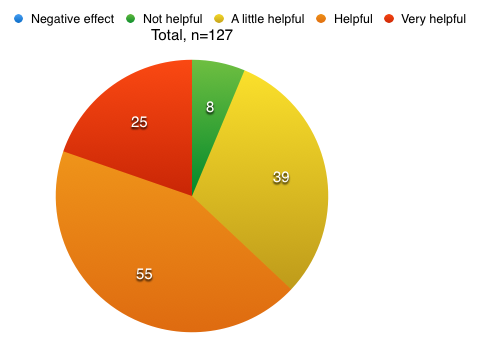
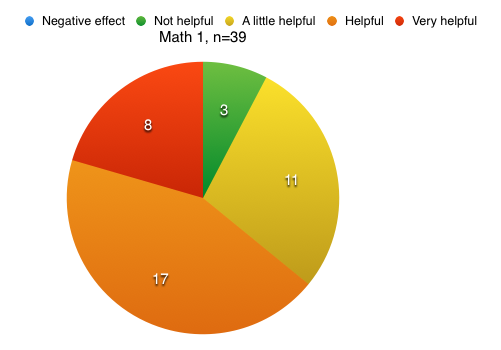
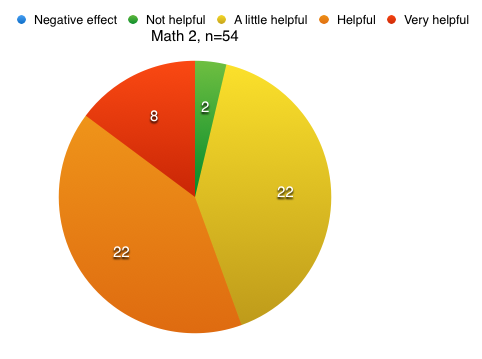
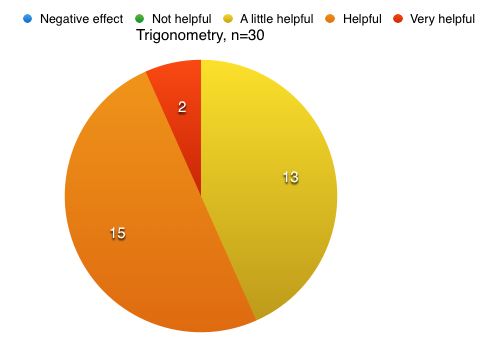
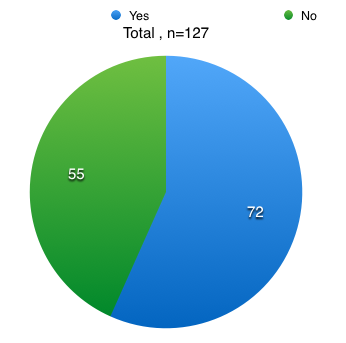
Pingback: Collaborative Classrooms – A Portrait of a Math Teacher as an Aging Man